Blogs
2024
October

Exploring the role of stable isotope geochemistry in nuclear forensics
Paulina Baranowska introduces her PhD research investigating the use of oxygen isotopes as a nuclear forensic signature.
2023
October
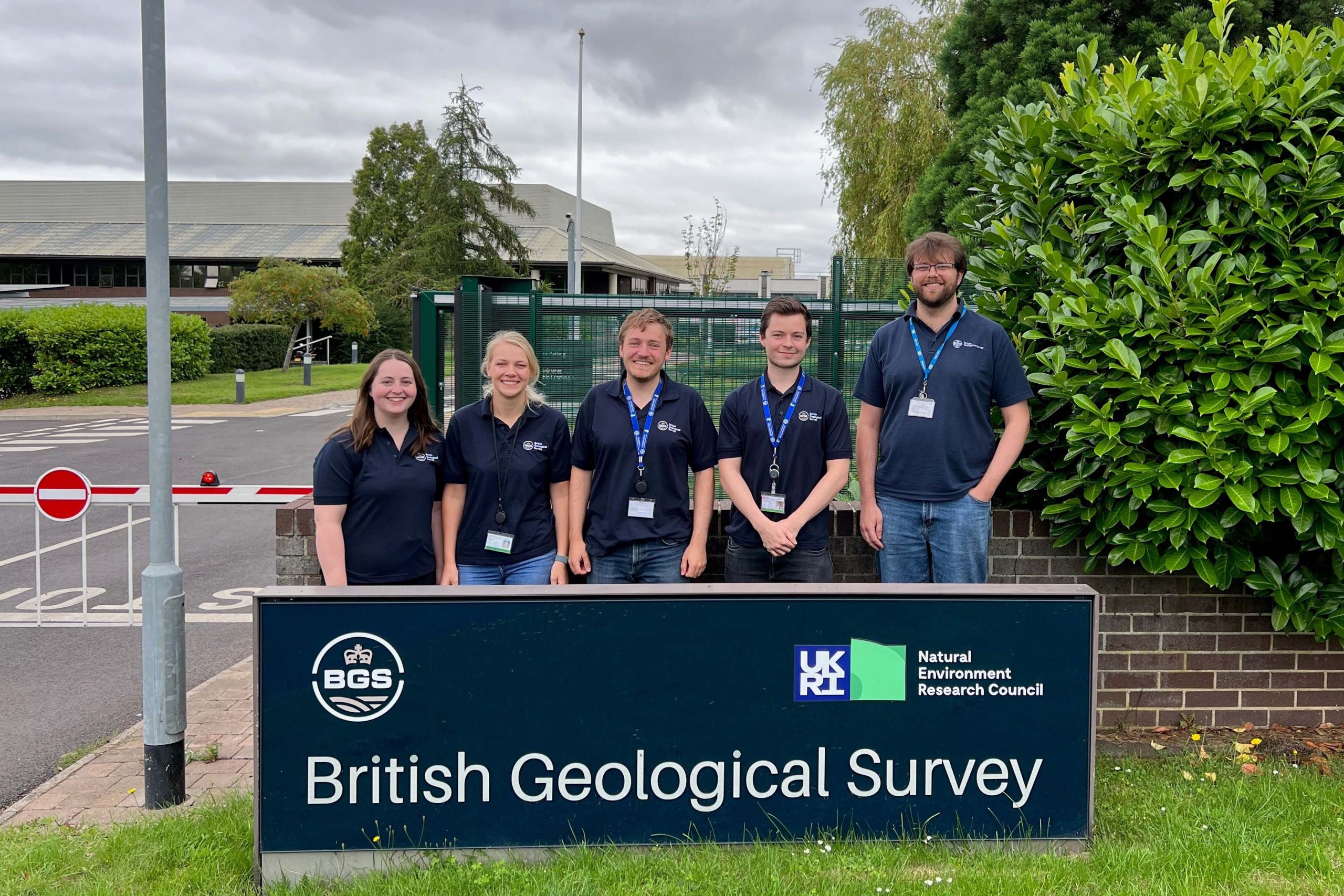
Nurturing early career scientists: 20 years of undergraduate industrial placements at BGS
Michael Watts, BGS Head of Inorganic Chemistry, and previous placement students reflect on their experiences working at BGS's Inorganic Geochemistry Facility over the past 20 years.
January
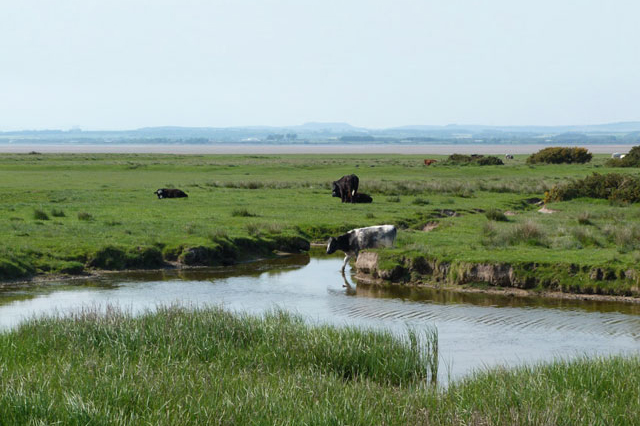
PhD student David Osborne is exploring Bronze Age animal husbandry using isotopes and X-rays.
2022
August
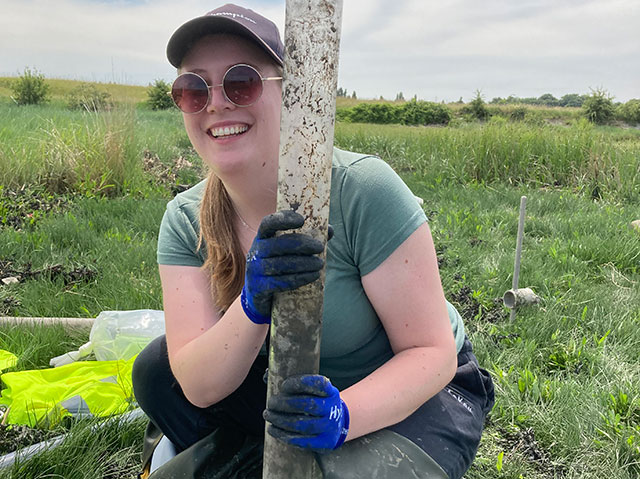
Sampling salt marsh sediments: a Thames microplastics fieldtrip
Megan Trusler gives an overview of her PhD project, which studies the role salt marshes play in the accumulation and transport of microplastics.
January
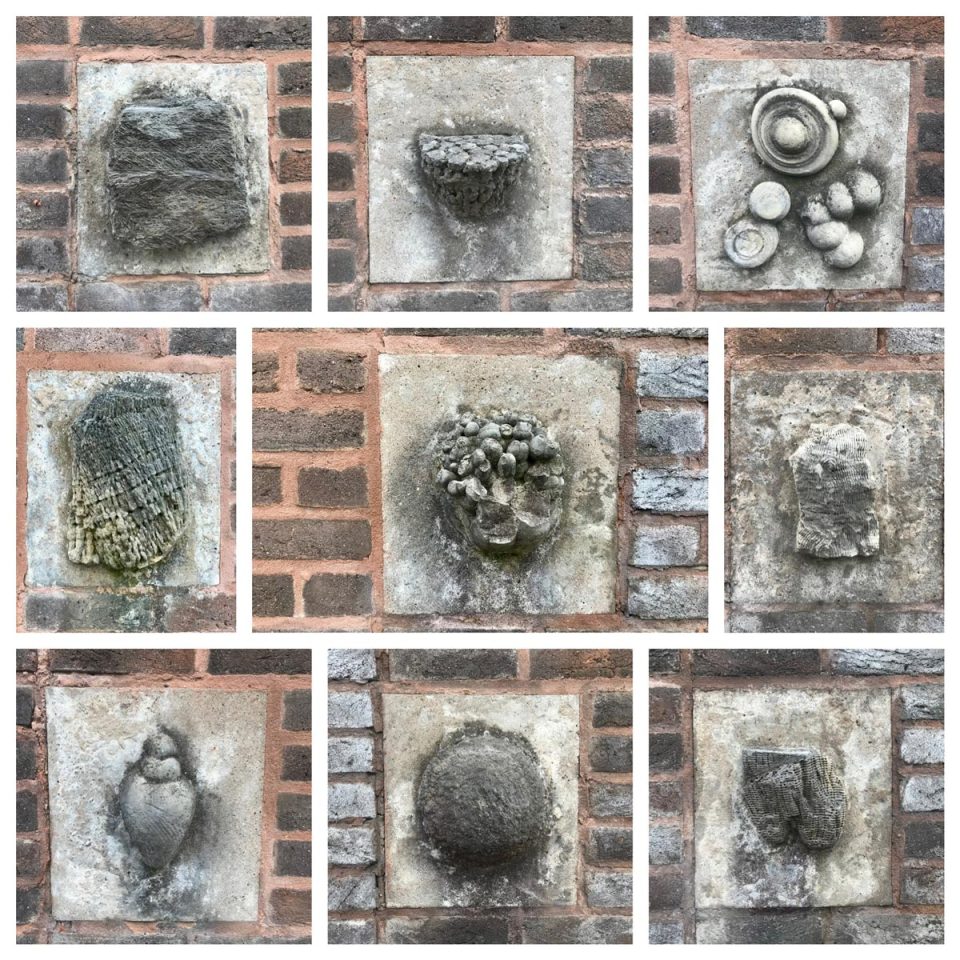
Standing on a prominent site close to the city centre, there has been a college on University Park main campus since the 1920s. The campus welcomes visitors to walk around its grounds.
2021
December
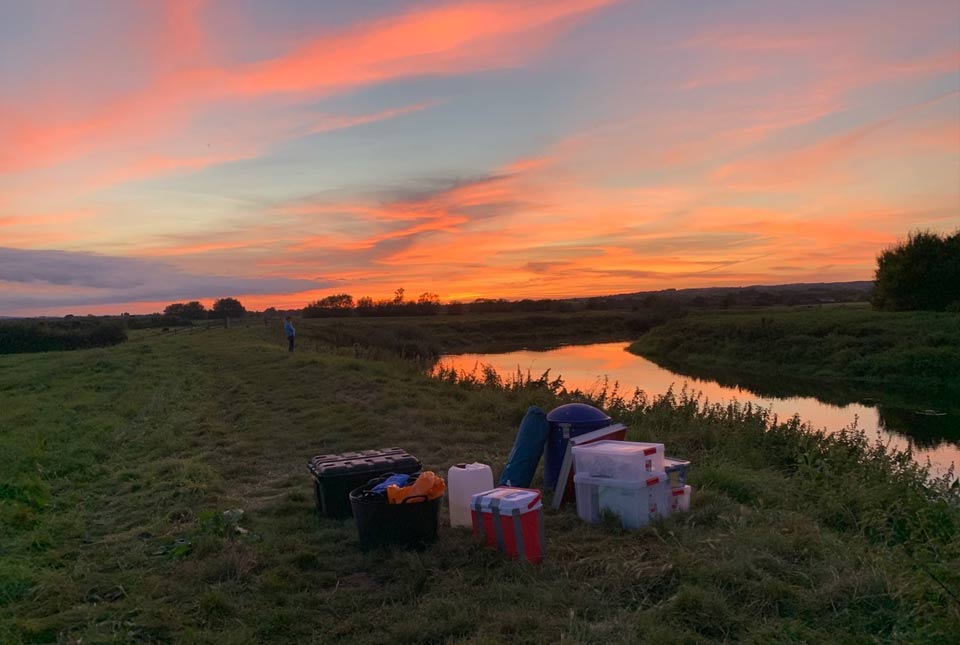
Evaluating contamination in sediment, waters and fish from two contrasting catchments in England
Environmental contaminants pose a serious problem to nearly all rivers in England and Wales. According to a 2019 report by the Environment Agency, only 14 per cent of rivers are of ‘good ecological status’ while, even more shockingly, zero per cent of rivers reached ‘good chemical status’.
November
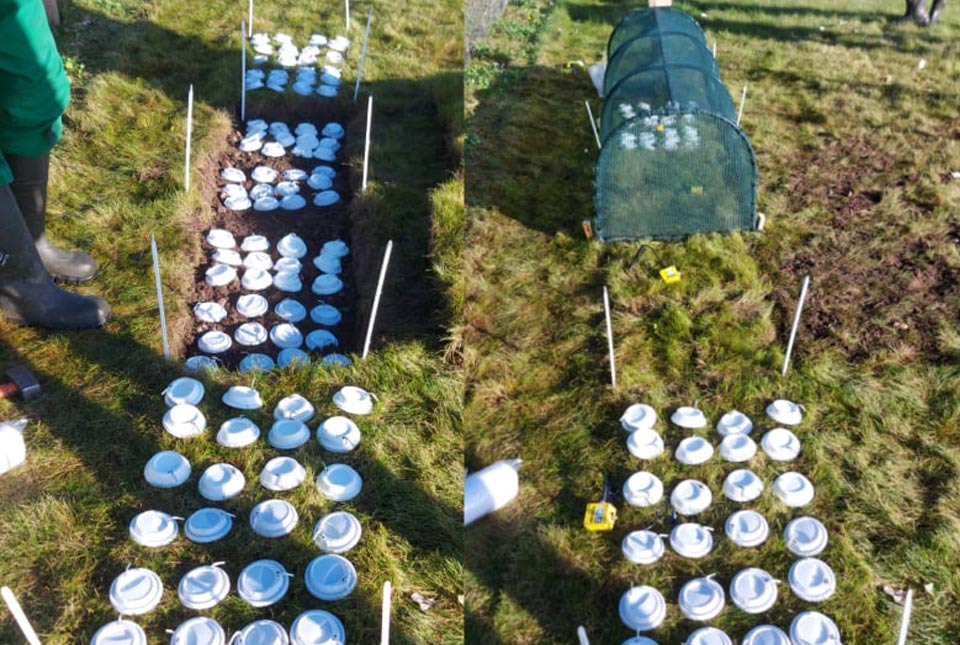
Stuck in the mud: the long-term accumulation and dispersal of microplastics across urban catchments
Given that microplastics are now ubiquitous within our environment, the issues associated with this persistent anthropogenic pollutant are of global concern. It is widely acknowledged that plastic polymers are slow to degrade in the environment and can persist over long timescales, so it is particularly important to identify microplastic fate transport pathways.
June
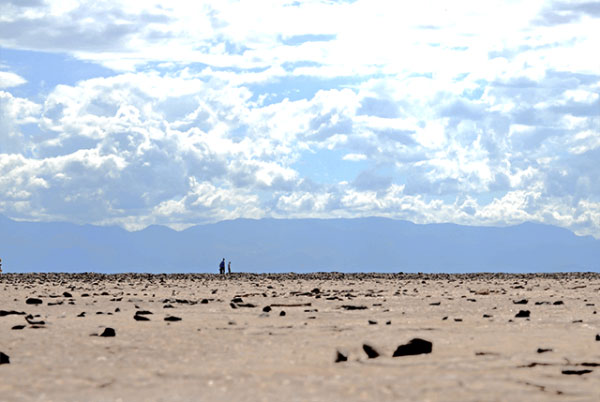
Climate change and human migration out of Africa
An international team of scientists, including Dr Jonathan Dean (now at the University of Hull) and Prof Melanie Leng (BGS Chief Scientist, environmental change, adaptation and resilience), have reconstructed how climate has changed over the last 200 000 years in eastern Africa. They have shown how climate change could have enabled the out of Africa migration of Homo sapiens around 60 000 years ago. The paper was published in Nature Communications, Earth & Environment in June 2021.
March
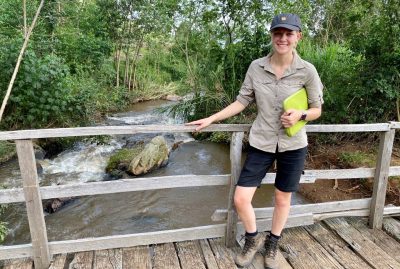
Land-to-lake Micronutrient transfer in East Africa
Hi, my name is Sophia and I am a BUFI PhD student based within the BGS Inorganic Geochemistry Facility in Keyworth. My research is entitled Micronutrient and pollution transfer in East African lake catchments. This PhD is in partnership with the University of Plymouth and is funded by the NERC ARIES doctoral training programme. Before beginning my PhD, I completed a BSc in Chemistry at the University of Surrey, during which I completed a placement year within the Inorganic Geochemistry team (see my previous blog, here) and this is what first sparked my interest in Environmental Geochemistry...
2020
December

Michael Watts from BGS specialises in the study of geochemical factors that affect the mobility of metals or nutrients and their effects on ecosystem or human health, with a particular focus on applied projects in sub-Saharan Africa.
November
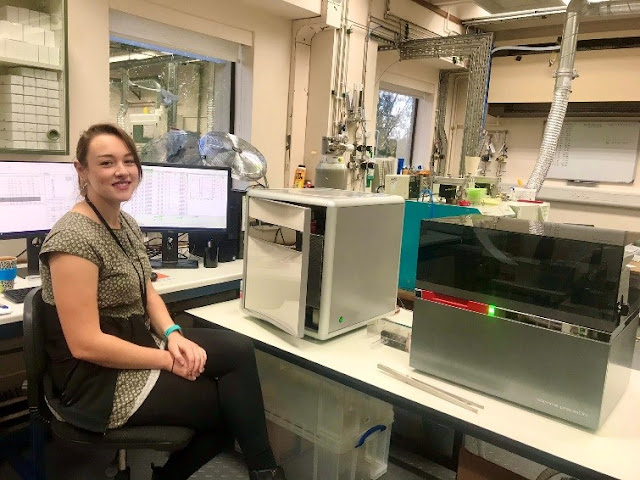
After completing a PhD researching the interaction between subarctic sea ice, oceanic nutrient upwelling and global climate over the last 1 million years at the University of Nottingham, Savannah Worne is now undertaking an apprenticeship with us here at the British Geological Survey. Here, she tells us a little bit more about what the role entails...
2019
November

Emma Baysal from Trakya University and Holly Miller of the University of Nottingham and BGS Visiting Research Fellow were awarded a Newton Advanced Fellowship. 'Building Capacity for Sustainable Archaeological Science and Heritage in Turkey' (NAFR1180204) promotes capacity building, education and training in the field of archaeological science in Turkey. This is the second in a series of 3 blogs that will discuss their initial 3 weeks of activities at BGS with guest researchers from Turkey...
October
Emma Baysal (Trakya University) and Holly Miller (University of Nottingham) were awarded a Newton Advanced Fellowship to promote capacity building, education and training in the field of archaeological science in Turkey. This is the first in a series of three blogs that will discuss their initial three weeks of activities at the British Geological Survey, with guest researchers from Turkey...
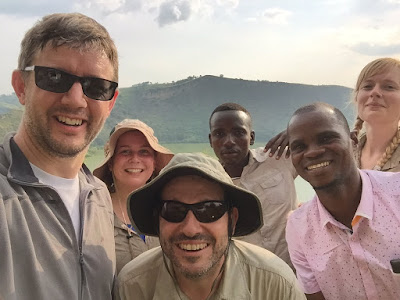
Laura Hunt is a PhD student hosted within the ODA programme at the British Geological Survey and the University of Nottingham. This summer she visited Uganda to complete the first fieldwork for her research...
September

Sea Ice control on CO2 release from the deep ocean in the subarctic Pacific Ocean by Savannah Worne
Savannah Worne is a PhD student from the University of Nottingham, working with the British Geological Survey as part of the Envision Doctoral Training Partnership. Her project focuses on reconstructing sea ice in the Bering Sea over the last million years. Through analysing the chemical composition of sediments from the bottom of the ocean, Savannah has been working towards trying to understand how increased/decreased amounts of sea ice control primary productivity, nutrient cycling, the upwelling of deep ocean water, and the impacts of these processes on the exchange of CO2 between the ocean and the atmosphere through time. Here, Savannah tells us more...
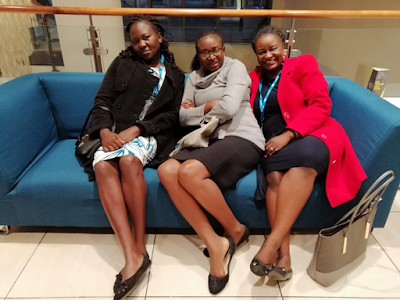
Our UK Experience... by Doreen Meso and Womba Kaumba
From May to July 2019 Doreen (University of Eldoret, Kenya) and Womba (Copperbelt University, Zambia) visited BGS as part of a Commonwealth Scholarship Council Fellowship, which involved a laboratory training secondment to the British Geological Survey for two months. They respectively run labs at their home institutes in Kenya and Zambia and teach practicals to students. Here they tell us about their placement at BGS...
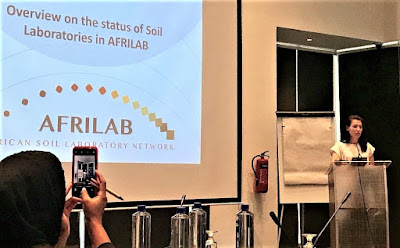
AFRILAB – Food and Agriculture Organisation, UN... by Michael Watts and Lucrezia Caon
As part of the BGS Global platform Mike Watts and Lucrezia Caon visited Nairobi to promote the work of AFRILAB and the GLOSLAN network. In anticipation of the next meeting in October, they share their experience of the event...

Is There a Relationship Between Cancer and the Environment?... by Marieta Garcia-Bajo
There are inexplicably high rates of esophageal cancer reported in some parts of the world, e.g. East Africa, which has baffled the medical sciences for some time. Scientists from the British Geological Survey and the International Agency for Research on Cancer are working together to see if there are any relationships between those affected by this type of cancer and the environment in which they live. Marieta Garcia–Bajo explains...
August
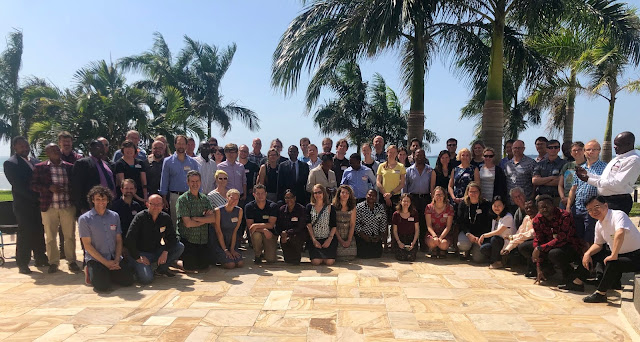
Why we need a Geo–Observatory of Africa’s Oldest Lake... by Melanie Leng
This summer, Melanie Leng (BGS's Chief Scientist for Environmental Change Adaptation) attended a workshop in Dar es Saleem, Tanzania, with around 70 other scientists from 10 countries, with the aim to form a plan to create a palaeo Geo-Observatory in this region...
July

Introducing the New Electron Microscopy at BGS... by Joe Emmings
Joe Emmings (BGS) tells us about a recent FIB–SEM and TEM collaboration with the Nanoscale and Microscale Research Centre (nmRC), University of Nottingham...
May

Talking environmental change and human impact at EGU19... by Dr Jack Lacey
Dr Jack Lacey from the BGS Stable Isotope Facility attended EGU from April 7–12. Today he tells us about his week and the research he presented...
April

My First European Geosciences Union General Assembly... by Olivier Humphrey
Olivier is a PhD student at the Centre for Environmental Geochemistry (British Geological Society / University of Nottingham) researching iodine dynamics...
March

Aquaculture: Pathway to food security in Kenya: Continuing the Research... by Andy Marriott
Well it's been a fun ride and we have now finally come full circle for the Aquaculture project in Kenya. As I mentioned way back in May 2018 a small group from the Inorganic Geochemistry team (IG) at British Geological Survey (BGS) in collaboration with The School of Environmental Sciences at the University of Eldoret (UoE), The School of Veterinary Medicine and Science (UoN), and the experienced research team at the Kenyan Marine Fisheries Research Institute (KMFRI) based in Kisumu, Kenya were successful in winning funding from the Newton–Utafiti International Links programme with the British Council. The project investigated problems of "food insecurity" in the Kenyan portion of Lake Victoria (only 6%) and the implications of both anthropogenic pollution and land run-off from changes in land use (soil erosion) and their impact on the health and nutritional quality of aquaculture farmed fish for "food safety" as proxies for pollution.
February

BGS and Heriot–Watt Partnership in Action: Geochemistry and Carbon Burial at the BSRG AGM 2018... by Joe Emmings
In late December, Joe Emmings (BGS) and Tom Wagner (Heriot–Watt University) convened Geochemistry and Carbon Burial Sessions at the British Sedimentological Research Group (BSRG) AGM. Here Joe tells us about the conference and ongoing research in this area...

Can we use carbon isotopes to tell us about past levels of CO2 in the atmosphere?... by Barry Lomax and Melanie Leng
Dr Barry Lomax and Prof Melanie Leng are isotope geochemists who work on understanding how the isotopic composition of environmental materials can tell us about past environments. Here they blog about their new paper, available via open access in the premiere geochemistry journal (Geochimica et Cosmochimica Acta), co–authored by Dr Janice Lake and Dr Phillip Jardine on the use of carbon isotopes in plant materials to predict atmospheric CO2. The paper sets out to test this relationship to determine if it could be used as a tool for estimating changes in atmospheric CO2 concentrations through geological time...
January
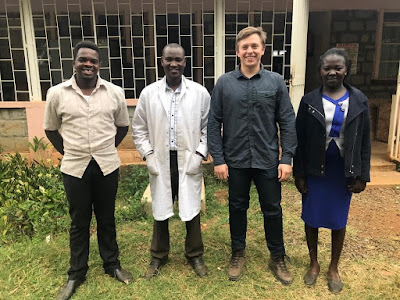
Inorganic Geochemistry in Kenya Part II... by Olivier Humphrey
I was recently involved in field work aimed at assessing the micronutrient status and monitoring exposure rates to potentially harmful elements in western Kenya. Michael Watts, Andy Marriot and I visited the University of Eldoret, Kenya for a 16 day fieldtrip that would consist of us collecting environmental and human biomonitoring samples from over 90 households in western Kenya. For more information see the earlier blog: Geochemistry and Health in the Kenyan Rift Valley. This was my second trip to Kenya for fieldwork, the first being in January earlier this year...
2018
December
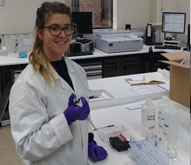
From Keyworth to Kisumu: Aquaculture in Lake Victoria, Kenya - A student adventure... by Kelsey Ferris
I have almost completed my 1-year industrial placement in the Inorganic Geochemistry team at BGS, and will soon be back in New Zealand to finish my undergraduate degree at Waikato University. My experience has included fieldwork in Kenya, aqueous chemistry analyses for BGS science projects and external clients...
November
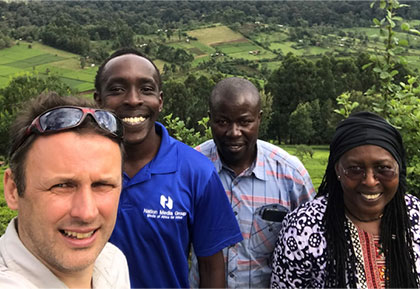
Geochemistry and Health in the Kenyan Rift Valley... by Michael Watts, Diana Menya and Odipo Osano
The Inorganic Geochemistry team within the Centre for Environmental Geochemistry (CEG) has, with partners from Moi University and the University of Eldoret (UoE) recently completed another round of environmental and human biomonitoring sampling in West Kenya, ranging from the tea estates in Nandi Hills and Kericho, as well as the sugar cane belt across Kisumu County...
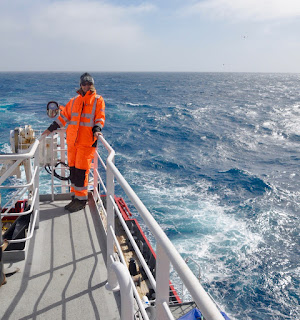
Last leg of ORCHESTRA cruise part 5... by Melanie Leng
Melanie Leng is currently taking part in an expedition to the Southern Ocean as part of ORCHESTRA (Ocean Regulation of Climate by Heat and Carbon Sequestration and Transports), a NERC funded programme with partners at the British Antarctic Survey (lead), the National Oceanography Centre, Plymouth Marine Laboratory, and many more including BGS. Here she updates us as she nears the end of her expedition on the RRS James Clark Ross...

Sampling starts on the RRS James Clark Ross: ORCHESTRA part 4... by Melanie Leng
Melanie Leng is currently part taking in an expedition to the Southern Ocean as part of ORCHESTRA (Ocean Regulation of Climate by Heat and Carbon Sequestration and Transports), a NERC funded programme with partners at the British Antarctic Survey (lead), the National Oceanography Centre, Plymouth Marine Laboratory, and many more including BGS and several UK universities. This is the fourth blog about her trip where the work begins on the RRS James Clark Ross...

On board the RRS James Clark Ross: ORCHESTRA part 3... by Melanie Leng
Melanie Leng is currently part taking in an expedition to the Southern Ocean as part of ORCHESTRA (Ocean Regulation of Climate by Heat and Carbon Sequestration and Transports), a NERC funded programme with partners at the British Antarctic Survey (lead), the National Oceanography Centre, Plymouth Marine Laboratory, and many more including BGS. This is the third blog about her trip where she updates us on her arrival on the RRS James Clark Ross...

I am in Stanley: ORCHESTRA part 2... by Melanie Leng
Melanie Leng is currently part taking in an expedition to the Southern Ocean as part of ORCHESTRA (Ocean Regulation of Climate by Heat and Carbon Sequestration and Transports), a NERC funded programme with partners at the British Antarctic Survey (lead), the National Oceanography Centre, Plymouth Marine Laboratory, and many more including BGS. Here she updates us on her journey so far...
October
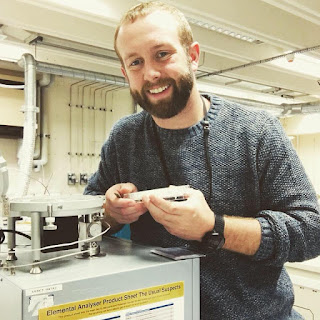
Getting a taste for Australian drought history... by Nick Patton
Hello, I am Nick, I recently started my PhD program at The University of Queensland (in collaboration with the Centre of Environmental Geochemistry at BGS and University of Nottingham) studying landscape evolution and climate variability within eastern Australia...
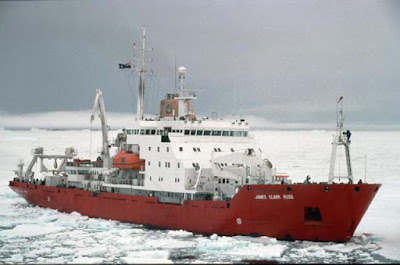
Wish me Fair Winds and Following Seas: investigating the Southern Ocean Part 1... by Melanie Leng
In less than a week I will be heading off to the Southern Ocean to help with "fieldwork" (seawork is more appropriate!) collecting seawater samples for ORCHESTRA. ORCHESTRA (Ocean Regulation of Climate by Heat and Carbon Sequestration and Transports) is a programme funded by NERC and includes partners at the British Antarctic Survey (lead), the National Oceanography Centre, Plymouth Marine Laboratory, and many more including BGS...

Sampling on the Skerne: highlights of an ENVISION research placement... by Pyar Pandit
When I sent off my application for an ENVISION research placement at BGS, I didn’t think I would be using liquid nitrogen, running a mass spectrometer, going out in the field to collect my own samples and I certainly didn’t think I would get accepted, but fortunately here I am, writing my first blog about my time at BGS and what an amazing experience it has been!...
September

Geochemistry for Sustainable Development: SEGH 2018, Zambia... by Olivier Humphrey
In July 2018, scientists from across the globe met in Victoria Falls, Livingstone, Zambia for the Society for Environmental Geochemistry and Health (SEGH) 34th International Conference focussed on 'Geochemistry for Sustainable Development'. The society aims to bring scientists from various disciplines to work together in understanding the interactions between the geochemical environment and the health of plants, animals, and humans.
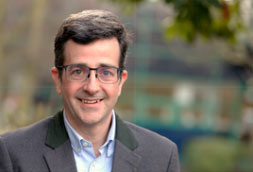
Hidden Hunger, Nutritious Horizons... by Professor Martin Broadley, Senior Research Fellow, Agriculture Team, Research and Evidence Division
DFID's support for crop breeding R&D has been in the news this summer. A focus of this major UK investment has been to develop biofortified crops—containing more essential minerals and vitamins in their edible portions—notably through HarvestPlus and the International Potato Center (CIP) as part of wider breeding activities within the CGIAR agriculture research system...

Rock solid advice for geoscience PhD students... by Melanie J Leng and Anson Mackay
Two experienced PhD supervisors share seven steps to achieve a successful geoscience PhD, a fuller version of this article will appear in the Geoscientist in a 3 part series starting with the September issue...
August

Using geochemistry to study rainfall variability and human impact history of the Australian subtropics... by Charlie Maxson
Hello, I am Charlie, a PhD student between the University of Adelaide, the University of Nottingham, and the British Geological Survey. I have recently started my PhD looking at Holocene rainfall variability and human impact in subtropical Australia...
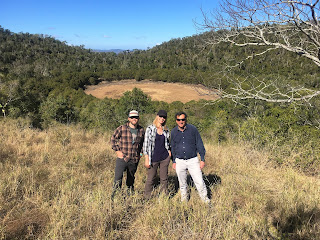
Investigating natural and human impact on Eastern Australia wetlands... by Melanie Leng
For 3 years Melanie Leng has been working with researchers from the University of Adelaide and University of Queensland on understanding natural and human impacts on sensitive wetlands along the eastern Australia coastline. With the team from Adelaide, Mel has previously helped develop climate records from the leaves of the paperbark trees that are preserved in North Stradbroke Island lakes. Here Mel tells us about a recent repeat visit to eastern Australia...
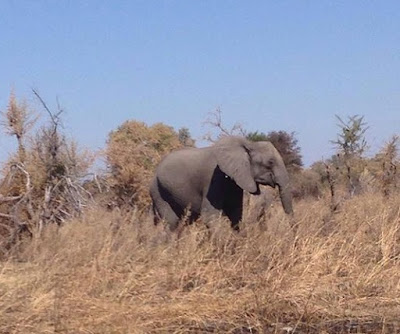
Working with elephants: ice breakers, interviews and interpreting data... by Fiona Sach
I have just returned from a brilliant three week trip to Southern Africa, to present at the 34th International conference of the Society for Environmental Geochemistry and Health (SEGH). The conference was held in Livingstone, Zambia on the theme of ‘Geochemistry for Sustainable development'. (See Michael Watt's blog for more information on the conference). It was followed by a quick trip to South Africa to collect elephant tail hair and faecal samples (see my earlier blog) to be brought back to the UK for preparation and multi-element analysis at BGS...
July
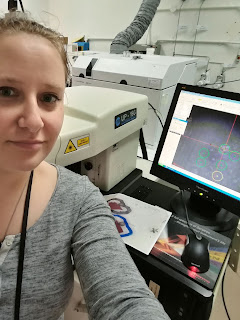
Using geochemistry to study ancient glass... by Camilla Bertini
Hi, my name is Camilla Bertini, and I am a PhD candidate from the University of Nottingham. During my PhD, I have been supervised by Professor Julian Henderson and Professor Christopher Loveluck, and I have just submitted my PhD with a dissertation titled "Trade and glass production in Early Medieval Italy, England, and Denmark (late 6th - 11th century AD): compositional and isotopic analysis". My main expertise area involves the study of ancient glasses, and more in particular the analysis of their chemical composition...
Accordions, the Adriatic and Analytical Chemistry... by Charles Gowing
My name is Charles Gowing and I have recently attended a workshop in one of the most beautiful locations in Slovenia...
Past climates of the western Tibetan Plateau... by Yuzhi Zhang
Hi. I am Yuzhi, a PhD student from Lanzhou University (China) currently on secondment to the School of Geography (University of Nottingham) and the Centre for Environmental Geochemistry at BGS. I am working on reconstructing the climate and environmental change in the western Tibetan Plateau over the Holocene period from lake sediments. In the UK my placement is specifically to gain experience with geochemical proxies including stable isotopes at the BGS...
June

From lab to Lake Victoria, Kenya: a student learning experience... by Kelsey Ferris
My name is Kelsey Ferris, a Biotechnology student from the University of Waikato, New Zealand. I am half way through my one-year placement with the British Geological Survey, working in the Inorganic Geochemistry Laboratories in Keyworth, Nottingham...
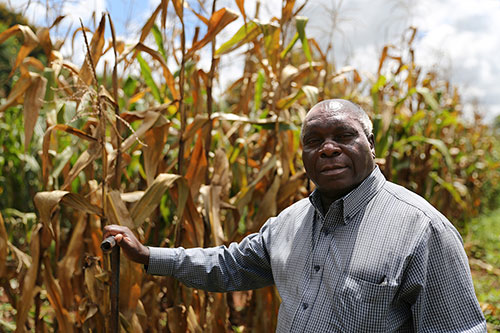
Tackling Malawi's Hidden Hunger...
Researchers are visiting 2,000 farms in Malawi, collecting soil and crop samples to helpfight a challenge to the health of millions across sub–Saharan Africa...
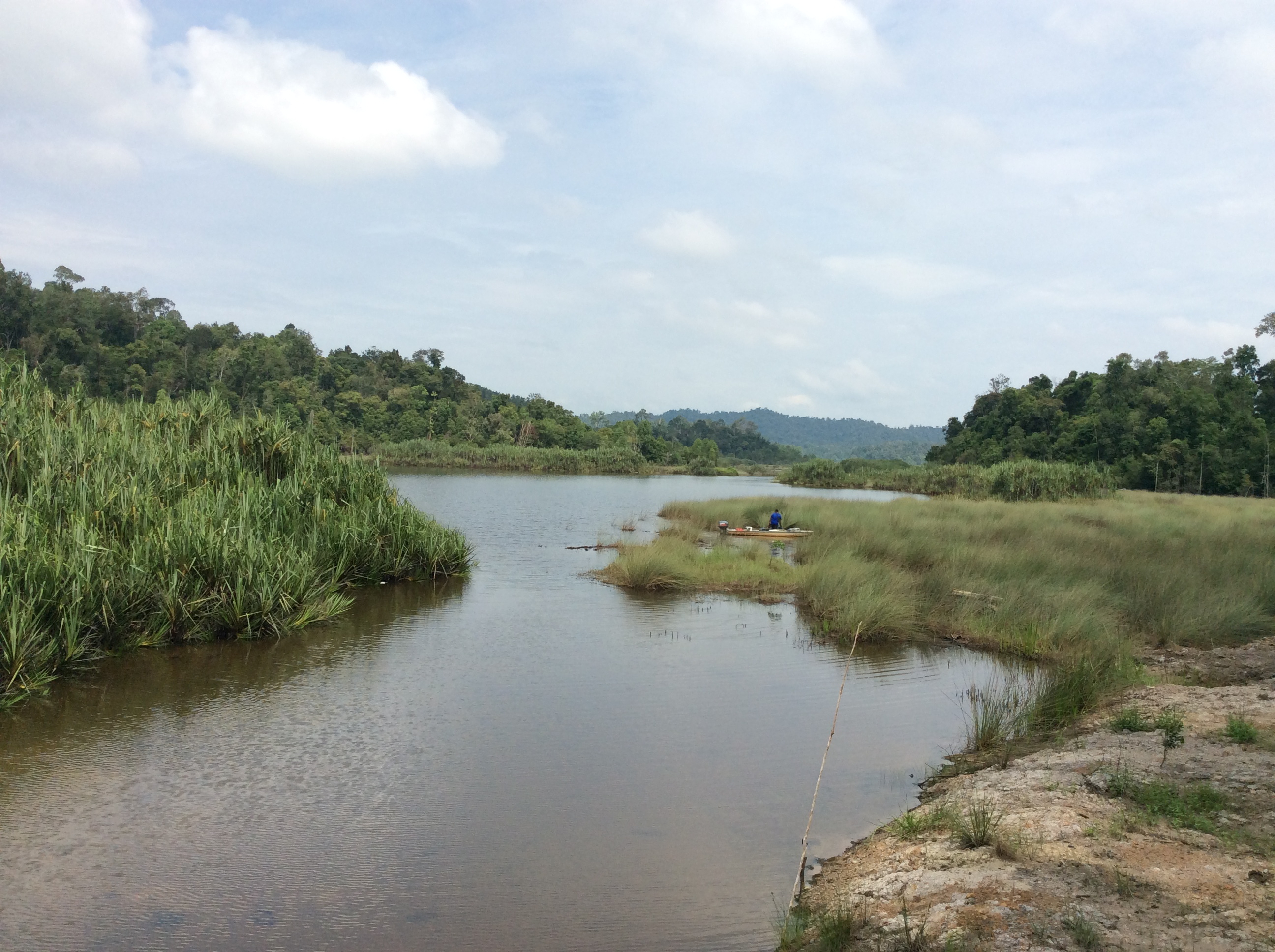
How do you make an impact in Hanoi?... by Suzanne McGowan
Professor Suzanne McGowan reports on her recent trip to Vietnam and Malaysia. Academics are now increasingly required to ensure that their research has an ‘impact’. Research that has an impact is defined by NERC as having led to “demonstrable social, cultural, public policy or service, health, environmental or quality of life benefits”. But what does this mean in practical terms for researchers trying to translate their latest findings into tangible outcomes? My recent trip to South-east Asia aimed find out; to assist with delivering impact for two ongoing projects in Vietnam and Malaysia, through a series of meetings with stakeholders...
May

Continental Drilling and a visit to China... by Melanie Leng
In early summer each year the International Continental scientific Drilling Program (ICDP) committee meets to assess applications for drilling deep holes in the Earth. This year the meeting was held in Guilin, China. Here Melanie Leng explains a bit about ICDP, the UK’s geoscience ICDP community, and her trip to China as the UK's representative on the ICDP Executive Committee...

Aquaculture: Pathway to food security in Kenya... by Andrew Marriott and Odipo Osano
In late December we were successful in obtaining funding through a Newton International Links bid with the British Council. This project aims to investigate problems of food insecurity and the implications of anthropogenic pollutants for food safety, the impact on the health and nutritional quality of aquaculture farmed fish, and the potential of fisheries aquaculture to boost food security and sustainability in Lake Victoria, Kenya...

A new Post Doctoral Research Associate in shale gas geochemistry at the BGS... by Joe Emmings
Joe Emmings is the new Post Doctoral Research Associate in shale gas geochemistry at the British Geological Survey’s Stable Isotope Facility and Centre for Environmental Geochemistry. Here, Joe tells us about his PhD at Leicester University and future research at the British Geological Survey...
April
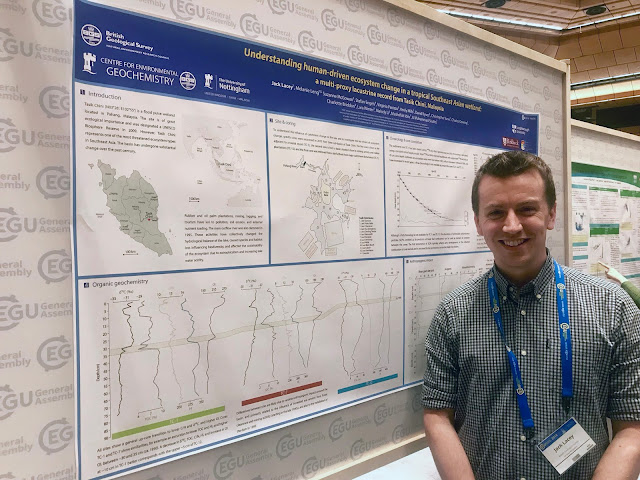
A trip to Vienna for the European Geosciences Union General Assembly... by Dr Jack Lacey
This month, over 15,000 scientists from more than 100 countries took part in the European Geosciences Union (EGU) General Assembly in Vienna, Austria. The EGU programme was diverse with over 17,000 presentations that detailed novel and exciting geoscience research from around the world, and beyond!...
March
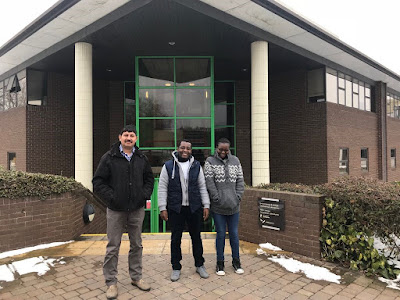
Commonwealth Professional Fellowship: placement at the BGS...
by Bwalya Kalunga and Munir ZiaOur names are Bwalya Kalunga, a Research Technician in the Ministry of Agriculture under the Zambia Agriculture Research Institute (ZARI) Department, and based at Mount Makulu Central Research Station; and Munir Zia from Pakistan who is the Research and Development Coordinator at Fauji Fertilizer Company Limited. We undertook a Commonwealth Professional Fellowship (CSCUK 2018). The fellowship was attainable at the BGS hosted by the Inorganic Geochemistry (IG) team within the Centre for Environmental Geochemistry. The visit has acquainted us on very important aspects of lab work, i.e. health and safety, sample handling, sample preparation, sample dissolutions, modern methods of analysis, quality assurance, data management, staff coordination and relation which most organisations lack in developing countries. The fellowship will be very pivotal in lifting our home country’s laboratories to be on the next level and also in demonstrating confidence in data output and its publication...
February

A major advancement in isotope geochemistry capability at the BGS...
by Andi SmithLast week the Stable Isotope Facility (part of the NERC Isotope Geosciences Laboratory and the Centre for Environmental Geochemistry at the BGS) took delivery of a new “Elemental Analyser IsoLink and Delta V Isotope Ratio Mass Spectrometer” from Thermo Scientific. This new instrumentation will drastically improve stable isotope analysis of carbon, nitrogen, sulphur, hydrogen and oxygen from a wide range of different materials. Here Andi Smith explains some of the advantages of this new equipment and plans for future collaboration with Thermo Scientific to develop the instrumentation...
January

Back to geoscience research after a career break... by Andrea Snelling
Working in research is brilliant but at times it can be tough. Post–doctoral work often means working on short–term contracts ranging from a couple of months to several years, with the constant shadow of where or when the next position will be. Trying to get a foot in in the first place can be extremely hard and finding a permanent position can feel like an impossible goal. There is always so much competition and it often feels as if you are on the back foot and of course there is the perpetual voice of doubt of "when will I be found out?"...
An Update from the Elephants... by Fiona Sach
The last year has been an absolute whirlwind of activity involving fieldwork at five UK Zoos, in the Kruger National Park and at a nearby mine in South Africa. There has been seemingly endless sample preparation, sample analysis and now, just recently, I have started to analyse the data generated. It is tremendously exciting to see these data from the UK zoo elephants, their diets and their environments and to use this information to identify the best matrix for reflecting mineral levels in free–living counter-parts...
2017
December

The First International Conference of the World Iodine Association... by Olivier Humphrey
In November 2017 a group of students from BGS and the University of Nottingham researching iodine geochemistry and its affect on human health attended the World Iodine Association’s first international conference 'Iodine in Food Systems and Health' in Pisa, Italy. The international conference aimed to bring together scientists and other stakeholders working on various aspects of iodine in food systems, to increase understanding on how variations in the earth’s supply of iodine affect human and animal health...
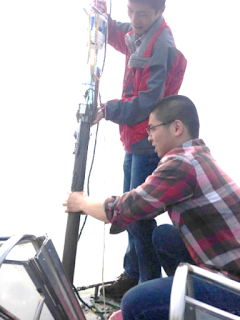
New research to investigate human impact on the Yangtze River... by Linghan Zeng
Hello, I am Linghan, a PhD student within the School of Geography at University of Nottingham which is a part of the Centre for Environmental Geochemistry at BGS. I have recently started by PhD on using lake sediments to investigate how lakes in the middle Yangtze floodplain respond to multiple stressors created by human impact...
November
Stable Isotope PhD training at the BGS... by Melanie Leng
In November the BGS hosted the second PhD training course in "Principles and Practise of Stable Isotope Geochemistry in Earth and Environmental Geosciences". This intensive 2 day course attracted 30 PhD students from across the UK (from St. Andrews to Exeter) who are researching a diverse range of subjects including stable isotopes in Martian analogues, mantle perdotite, Mesolithic artifacts and Namurian shales!...

Measurement and modelling human dermal bioavailability of potentially harmful organic soil contaminants... by Jack Lort
I am a PhD student who recently started a NERC and BBSRC funded studentship through the STARS Centre for Doctoral Training, working with Prof Paul Nathanail, Dr Christopher Vane and Dr Darren Beriro. Prior to starting my PhD, I studied at Aberystwyth University, gaining a first class degree in BSc Environmental Earth Science and then continuing onto study MSc Environmental Monitoring and Analysis, which I completed in September. These two courses focused heavily on geochemistry, laboratory techniques and contaminated land...
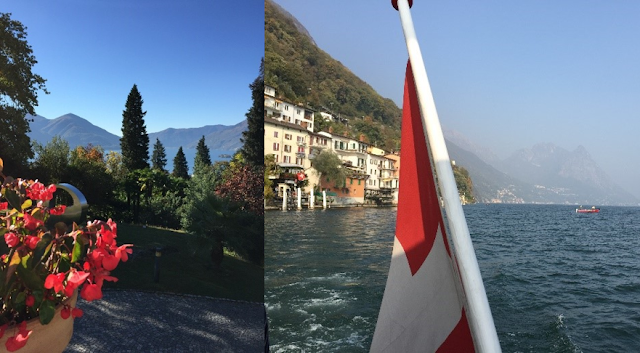
ISOcycles – conference Monte Verita, Switzerland... by Andi Smith and Angela Lamb
In October 2017 a small group of researchers descended on the Monte Verita conference centre in Ascona, Switzerland. This fantastic conference centre is the venue of choice for Congressi Stefano Franscini, the international conference platform of ETH Zurich. The conference was aimed at bringing together experts from a range of scientific disciplines to discuss the topic of “Reaching an integrated use of stable isotopes to constrain biogeochemical nutrient cycles.” Andi Smith and Angela Lamb attended from the NERC Stable Isotope Facility at the BGS and here Andi discusses the conference in more detail...

Stable Isotope Geochemistry Training course at BGS... by Charly Briddon
A bit about me...
Hi, my name is Charly and I am a second year PhD student at the University of Nottingham in the School of Geography and part of the Centre for Environmental Geochemistry at the BGS. Let me start by introducing what I do. I am investigating the impact of aquaculture (in this case, the high intensive farming of fish in cages) in freshwater lakes on the island of Luzon, in the Philippines...
August
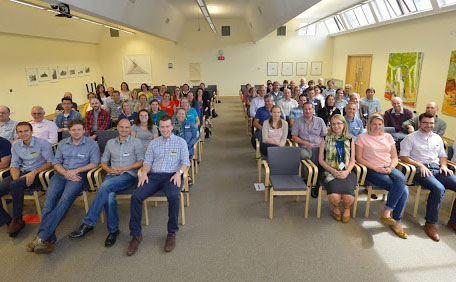
Stable Isotope Mass Spectrometry User Group (SIMSUG) Meeting... by Jack Lacey
In July, the 14th Stable Isotope Mass Spectrometry User Group (SIMSUG) meeting was hosted by the Stable Isotope Facility at the British Geological Survey. SIMSUG brings together scientific users, engineers, manufacturers, and suppliers of mass spectrometry equipment to discuss new applications and developments in stable isotope research and analytical instrumentation. Although the meeting has been held annually in the past, the last SIMSUG was hosted six years ago in 2011 by Lancaster University Centre for Ecology and Hydrology – so about time for a catch up!...
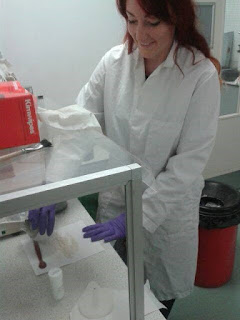
Fishy Findings... by Laura Hubbard.
I’m Laura, a 3rd year Animal Science with Computer Science student at the University of Nottingham. During summer 2016 I undertook a project looking at heavy metal and bacterial contamination of fish sold in the UK, in collaboration with the Inorganic Geochemistry Team at BGS, Keyworth. Although this may not seem like the most exciting topic (you might think there are bigger fish to fry) we currently import 70% of our seafood. It is important to monitor these products for harmful substances to find out what we are really eating. The main focus of the project was to compare imported farmed fish from Asia with wild caught and EU farmed fish. We often see horror stories in the news about food from abroad containing all sorts of scary things. But is there any truth to this or is it a load of codswallop?...
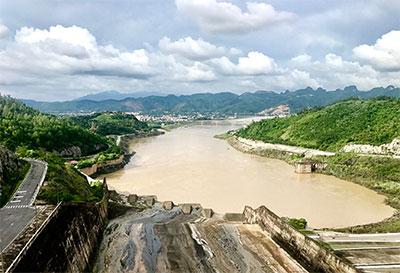
Kick starting the new Red River Delta project in Vietnam... by Dr Ginnie Panizzo.
In early July, 4 members of the Centre for Environmental Geochemistry (Suzanne McGowan, Ginnie Panizzo, Chris Vane, Melanie Leng) travelled to Hanoi, Vietnam to meet their Vietnamese Academy of Science and Technology (VAST) collaborators on a new 3 year project. The project entitled "Assessing human impacts on the Red River system, Vietnam, to enable sustainable management" was awarded to Suzanne McGowan (UK) and Do Thu Nga (VN) under the Newton Fund RCUK-NAFOSTED Research Partnership Call and includes a 10 strong research team. Here Ginnie tells us about the trip...
July
Isotopes in Biogenic Silica conference... by Melanie Leng.
In June 2017, the ninth meeting of the Isotopes in Biogenic Silica (IBiS) working group met in Blanes, Spain. The meeting was arranged with the aim of those interested in "silica, silicon and isotopes" to meet to discuss recent advances and discoveries in...

Success in Scotland: BUFI Science Festival 2017... by Olivier Humphrey.
Hello, my name is Olivier, I am a PhD student at the Centre for Environmental Geochemistry (University of Nottingham and BGS) and I have recently attended the BUFI Science Festival 2017, hosted in The Lyell Centre, Heriot–Watt University, Edinburgh...
June
Continental Drilling and Northern Sweden... by Melanie Leng.
In early June each year the International Continental scientific Drilling Program (ICDP) committee meets to assess applications for drilling deep holes in the Earth. This year the meeting was held in Kiruna in northern Sweden. Here Melanie Leng explains a bit about ICDP, the UK’s geoscience ICDP community, and her trip to Kiruna as the UK's representative on the ICDP Executive Committee...
The start of a major new research project (ORCHESTRA): Part 2... by Carol Arrowsmith.
The British Geological Survey (BGS) is a major partner in a scientific programme called ORCHESTRA (Ocean Regulation of Climate through Heat and carbon Sequestration and Transport) which has been running for over a year. The project aims to improve our ability to understand and predict the role of the Southern Ocean currents to modulate global climate. The BGS’s contribution to this research is to analyse the oxygen and carbon isotope composition of the ocean waters from the World’s oceans over a 5 year period. In particular the carbon data will be used to investigate where carbon is ether absorbed by the ocean or expelled into the atmosphere. This is particularly important as the oceans regulate atmospheric CO2.
May
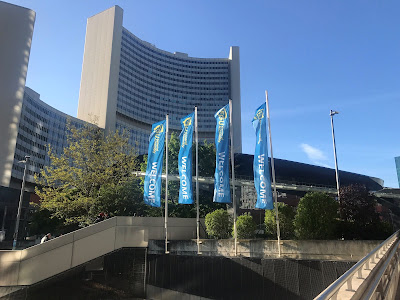
The European Geosciences Union General Assembly, Vienna... by Jack Lacey, Melanie Leng, & Andi Smith
In April, 14,496 scientists from 107 countries participated in the European Geosciences Union (EGU) General Assembly in Vienna, Austria. Over the course of the five-day conference there were an astounding 4,849 oral and 11,312 poster presentations, with several authored by staff from the British Geological Survey. The BGS Stable Isotope Facility was represented by Jack Lacey, Melanie Leng, and Andi Smith. In this blog they report on their week at EGU and tell us about the work they presented on lake and speleothem records...
First meeting of the UK consortium of the DeepCHALLA project... by Heather Moorhouse
We held the first meeting of UK scientists working on the International Continental scientific Drilling Programme’s DeepCHALLA project at a very rainy BGS Keyworth. This NERC funded consortium of scientists is part of a large, international team that will investigate over 214 metres of lake sediment cores dating back to ~250,000 years, to understand climate change in equatorial east Africa.
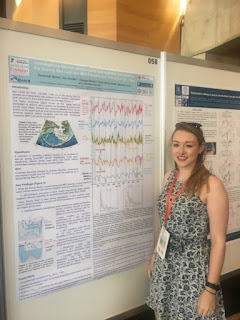
The Past Global Changes Open Science Meeting, Zaragoza... by PhD student Savannah Worne
"The PAGES (Past Global Changes) project is an international effort to coordinate and promote past global change research. The primary objective is to improve our understanding of past changes in the Earth system in order to improve projections of future climate and environment, and inform strategies for sustainability." (www.pages-osm.org, Accessed May 2017).
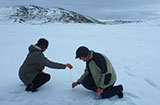
Lakes and the Arctic Carbon Cycle... by Suzanne McGowan
A blog at the start of the NERC Standard grant: "Ecological effects of glacial dust deposition on remote Arctic lakes". This grant (headed by Suzanne at Nottingham and Michael Watts at BGS) brings together a dynamic team with complementary skills and experience, notably in dust dynamics, Arctic limnology (in particular, experimental limnology, algal ecology and nutrient dynamics) and geochemistry. The proposal builds on these four complementary research strands to allow an integrated analysis of dust particle size and deposition rates, its chemical composition and its ecological effects in nutrient–limited lakes.
March
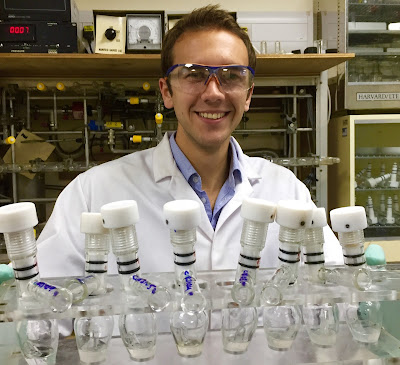
An exciting new development in soil phosphate oxygen isotope analysis... by Andi Smith
In early February, Andi Smith (Stable Isotope Facility) and Sammi Coyle (PhD student joint with The University of Nottingham and Scotland's Rural College) visited collaborators at Rothamsted Research (North Wyke, Devon), to learn more about one of our most exciting stable isotope techniques developments...

Starting my PhD with the British Geological Survey... by James Williams
Hello, my name is James and I have recently started my PhD at the School of Earth and Ocean Sciences, Cardiff University and the British Geological Survey...
February

Bye Bye to Jonathan Dean... by Jonathan Dean
At the end of February, Jonathan Dean will bid farewell to the Stable Isotope Facility at the British Geological Survey to start a lectureship at the University of Hull, here he looks back on his time in Keyworth...
Investigating Climate and Environmental Change in Eastern Australia (Part 2)... by Melanie Leng
In May 2016 Melanie blogged about her role in a project led by Dr John Tibby and Dr Cameron Barr (from University of Adelaide) on understanding climate change in eastern Australia...
January
Geochemistry Networking Event held in December 2016... by Ginnie Panizzo
On the 16th December 2016 the Centre for Environmental Geochemistry (CEG) held a Networking event between key female geoscience researchers the British Geological Survey (BGS) and the University of Nottingham (UoN)...

Geochemistry in Africa... by Michael Watts, Elliott Hamilton, Belinda Kaninga, Kenneth Maseka and Godfrey Sakala
Michael Watts and Elliott Hamilton returned to Africa to undertake two main tasks; (1) find a conference venue for the Society for Environmental Geochemistry 2018 international conference to be hosted in Victoria Falls, and (2) undertake fieldwork in the Zambian copperbelt as part of the Royal Society-DFID project...

Transitioning from Flame AAS to MP–AES: benefits and advantages... by Emmanuel Chidiwa Mbewe
My name is Emmanuel Chidiwa Mbewe from Lilongwe University Agriculture and Natural Resources in Malawi. I work as a Chief Technician in Soil Sciences within the Department of Crop and Soil Sciences. Currently I am undergoing a Commonwealth Professional Scholarship with the Inorganic Geochemistry team within the Centre for Environmental Geochemistry, during which I have experienced modern methods of laboratory analyses, systems of work, including quality assurance and overall management of tasks and data to demonstrate confidence in data output. I also attended a meeting in London for the Commonwealth Scholarships Commission (CSC) Fellows Connect 2016 which enabled me to meet other Fellows based around the UK, to share my experiences and celebrate my fellowship...
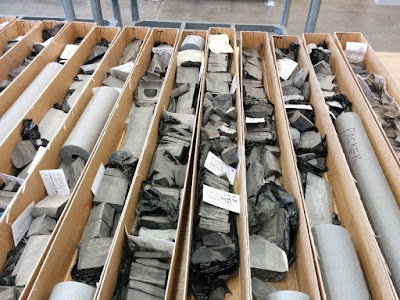
First Year of my PhD: Generating a better understanding of the UK’s shale gas... by Patrick Whitelaw
The shale industry is rapidly changing, with large developments such as the first fracking licenses being awarded since I started my research. However still relatively little is known about the UK's shale gas potential and how much focus should be placed the industry's development. With the research I am currently undertaking aiming to help shape and direct the government's legislation on a controversial industry...
2016
December

Poster presentation at the Royal Society of Chemistry... by Saeed Ahmad
Hi, my name is Saeed, I am a PhD student at the University of Nottingham in the School of Biosciences, and on the 14th of November I attended an Early Career Researchers Meeting on the Environmental Chemistry of Water, Sediment and Soil at the Royal Society of Chemistry...
November

The International Conference in Paleoceanography 2016... by Sonja Felder and Rowan Dejardin
It's us again, Sonja and Rowan, two BGS BUFI PhD students. Recently we took part in the twelfth International Conference in Paleoceanography, aka "ICP", in Utrecht, Netherlands. Held every three years, ICP is the biggest international paleoceanography conference, so it was unsurprising that some of the biggest names in the field turned up to present their work. This gave those of us new to the field a great opportunity to discuss our work and socialise with them at events like the conference dinner or the traditional "paleomusicology" concert...

35th International Geological Congress 27 Aug – 4 Sept 2016, Cape Town, South Africa... by Sev Kender
In August 2016 I set off for the amazing Cape Town, South Africa, to attend the 35th International Geological Congress (http://www.35igc.org/). This is one of the largest and most important geoscience conferences in the world that takes place every 4 years. This prestigious meeting has taken place in the African subcontinent only once before, in its inaugural year 1929 in Pretoria, South Africa...
Learning the fundamentals of continental scientific drilling with ICDP at GFZ, Potsdam.... by Jack Lacey
The International Continental scientific Drilling Program (ICDP) is a global initiative that provides financial and operational support for multinational research teams to drill the Earth’s continental crust, with the principle aim of better understanding our Earth system through cutting–edge transdisciplinary scientific research. ICDP has supported drilling projects across the world to investigate a broad range of science themes, including geological hazards, natural resources, and palaeoclimate (see the extensive list here). The program comprises 24 member countries, and the UK has been an active member since 2012 funded by the British Geological Survey (ICDP–UK)...

The first year of my PhD research: iodine geodynamics... by Olivier Humphrey Hi, my name is Olivier and I have just started the second year of my PhD at the Centre for Environmental Geochemistry (University of Nottingham and the BGS). My research revolves around iodine geodynamics and plant availability. In this blog I will provide a brief update of some of the work I have been doing over the past year...

The 20th year celebration of the International Continental scientific Drilling Program (ICDP)... by Melanie Leng
This October the ICDP celebrated 20 years since its formation in 1996. During this time ICDP has contributed funding to around 50 deep drilling projects including drilling into the San Andreas Fault, taking sediment cores from some of the biggest and oldest lakes in the world, and most recently (this summer) drilling the "ring peak" of the Chicxulub impact crater. Here Melanie Leng talks about the 20th year celebration event of the ICDP...
October

Getting a Read on Radon: measurement of radon activity in groundwater samples from a proposed fracking site – a student project!... by James Dinsley
My name is James Dinsley, an Environmental Science student from the University of Nottingham and I am currently a quarter of the way through a one–year placement with the British Geological Survey, working in the Inorganic Geochemistry Laboratories in Keyworth, Nottingham. Over my year with the BGS, I have been supporting projects with Dr Charles Gowing and Dr Andy Marriott...

Examining the chemistry of mushrooms: a valuable tool for archaeology?... by Angela Lamb
Mushrooms are a common part of modern human diets, yet they are rarely considered from an archaeological perspective. As soft–bodied organisms they readily rot, so are very rarely found on archaeological sites...
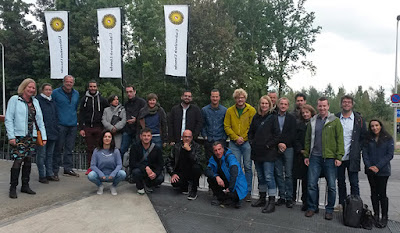
Linking Geology & Biology in Europe’s oldest lake: a 1.3 million–year record of climate change and evolution from Lake Ohrid... by Jack Lacey and Melanie Leng
The Lake Ohrid drilling project has featured regularly on the BGS blog site (Geoblog) over past years, now reaching its final stages Jack Lacey and Melanie Leng travelled to the Netherlands to attend the 6th project workshop in Utrecht. Here they report on the meeting and provide a much overdue update on this ground-breaking interdisciplinary research...
INTECOL International Wetlands conference in Changshu, China... by Suzanne McGowan and Keely Mills
Staff from the Centre for Environmental Geochemistry (CEG), a collaboration between the British Geological Survey and the University of Nottingham, Suzanne McGowan and Keely Mills, travelled to Changshu in China to attend the 10th INTECOL International Wetlands Conference which took place on 19–24th September 2016. Here they tell us a bit about the conference...
September

Zoo elephants help their wild counterparts in Kruger National Park... by Fiona Sach
Eight zoo elephants from Knowsley Safari Park and Twycross Zoo have been contributing to work that is being carried out to reduce Human–Elephant Conflict surrounding the Kruger National Park...
July

INTIMATE: a Research and Training School in Palaeoclimate... by Stefan Engels
The INTIMATE network aims to better understand the mechanisms and impact of climate change by bringing together scientists working to reconstruct and model palaeoclimate through the INTegration of Ice core, MArine, and TErrestrial palaeoclimate records...
June
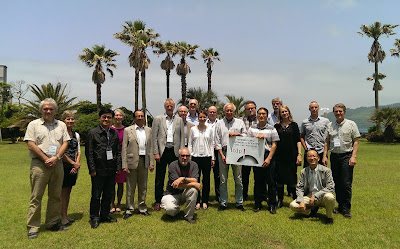
Continental Drilling and South Korea... by Melanie Leng
In early June each year the International Continental scientific Drilling Program (ICDP) committee meets to assess applications for drilling deep holes in the Earth. This year the meeting was held on Jeju Island (off South Korea). Here Melanie Leng explains a bit about ICDP, the UK’s geoscience community involvement and her trip to South Korea...

A blog by Prof Melanie Leng on her career as a geochemist on the "Girls Into Geoscience" website... by Melanie Leng
Melanie Leng is the director of the Stable Isotope Facility at the British Geological Survey and a Professor of Isotope Geoscience at Nottingham University. In the following blog Mel tells us why she decided to pursue a career in geoscience, what she enjoys about her current roles and offers some advice to those who may be interested in a similar career path...
May

Are land-use decisions by African elephants influenced by environmental geochemistry?... by Michael Watts, Lisa Yon and Stephen Cunningham
This is a unique, interdisciplinary project involving environmental geochemistry, plant science, and animal health between a range of partners, including BGS and the University of Nottingham (UoN) to address research questions which have important and practical implications for wildlife health and conservation. In the first phase of the project, mineral levels in a range of biological samples (serum, hair, nails) from elephants at five UK zoos will be measured to validate their use as possible biomarkers of mineral status in wild elephants. The mineral content of food, soil and water consumed by these elephants will be determined...
More on our project investigating human impact on Malaysian wetlands... this time by Masters student Charly Briddon
Hi, my name is Charly Briddon and I am Keele University student currently undertaking research for my MSc in Geoscience. For my international placement I have joined a collaborative project within the Centre for Environmental Geochemistry (a collaboration between the University of Nottingham and the British Geological Survey) involving supervisors at Keele University (Dr Antonia Law), University of Nottingham (Dr Suzanne McGowan) and the British Geological Survey (Dr Keely Mills). This has given me the opportunity to spend six months at the University of Nottingham Campus in Malaysia investigating how human activities within the lake catchment of a really special wetland system (Tasik Chini) has changed the lake ecology over time...
Reconstructing the pollution history of southeast Asian wetlands... by Stefan Engels
How time flies! It has only been about 4 months since I started my new job as a research fellow with Melanie Leng and Suzanne McGowan within the Centre for Environmental Geochemistry. The main aim of my research project is to reconstruct the pollution history of southeast Asian wetland systems, and one of the first locations that we selected as a study–site was Tasik Chini on the Malaysian peninsula, here I tell you about progress to date...

Investigating Climate Change in Eastern Australia... by Melanie Leng
In the stable Isotope Facility at the British Geological survey we spend most of our time collaborating with UK universities and research institutes. However, every now and again we get an opportunity that's too good to be true… One such opportunity came a few of years ago when an email popped into my inbox from Australia. Dr John Tibby and Dr Cameron Barr (from the University of Adelaide) explained that in Australia they have a particular problem in that there are relatively few geological archives of climate change, so researchers into past climate tend to rely on short timescale corals (which can be related to seawater salinity and temperatures) or tree rings (a proxy for rainfall amount). However, both corals and trees tend to only live for a few hundred years, so they were keen to develop new records of Australian climate...
April

Dama: the deer that walked the world... by Naomi Sykes
Back in 2011 we began an international research project, funded by the Arts and Humanities Research Council, to explore the natural and cultural history of the European Fallow Deer (Dama dama dama). Over the last four years we have been working with (in alphabetical order!) anthropologists, archaeologists, (art) historians, deer stalkers, geochemists, geneticists, museum curators and zoologists to gather all available information that might help us to understand better the timing and circumstances by which this elegant and beautiful deer spread around the world.
March

From ice age insects to the tropics: an introduction to new postdoctoral researcher... by Stefan Engels
Hello, my name is Stefan Engels and I’ve just started a 3-year postdoctoral research project within the Centre for Environmental Geochemistry, between the School of Geography (University of Nottingham) and the BGS. I am a Dutch guy who’s lived most of his life in Utrecht. The Netherlands. I completed my PhD research at the Free University of Amsterdam, where I studied subfossil chironomid remains (insect jaws!) found in lake sediment records that were dated to the last glacial period around 50,000 years ago. I used the fossil insects of lakes to reconstruct past ecosystem development and to quantitatively infer past summer temperatures. My results showed that summer temperatures were probably as high as today across large parts of Europe during the middle of the last glacial, which was quite a surprise!
February
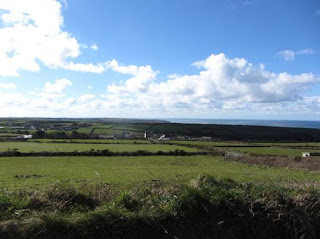
The importance of water quality and water treatment for private water supply users... by Louise Ander and Rebecca Close
Joint research from the British Geological Survey (BGS) and Public Health England (PHE) has provided new information on the incidence rate of private water supply users using drinking water with high concentrations of some naturally occurring chemicals in Cornwall, UK.
January
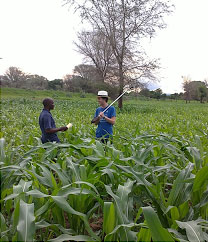
Mapping Hidden Hunger in Malawi... by Edward Joy and Louise Ander
Edward Joy and Louise Ander describe how recently created maps of Malawi predict spatial variation in the dietary supply of seven essential elements (calcium, copper, iodine, iron, magnesium, selenium and zinc). These maps combine information on soil and crop properties, household dietary choices and socio-economic factors. This information can help to identify key controls on mineral micronutrient dietary deficiencies – also known as "hidden hunger" – and identify research priorities for the development of appropriate and feasible interventions to reduce population-wide hidden hunger.

A new PhD researching the effects of variation in the orbit of the Earth around the sun... by Savannah Worne
Hello, my name is Savannah and I have just started my PhD within the Centre for Environmental Geochemistry, between the University of Nottingham School of Geography and the BGS. I recently graduated from the university with a BSc Geography, completing my dissertation research using the sediments to investigate environmental change over the last hundred years in Maloe More, Lake Baikal, Siberia. From my studies, I became very interested in palaeoenvironmental change and was keen to pursue a career in research, leading me to apply for this PhD.

From tiny seeds grow... by PhD student Leslie Bode
Hi, my name is Leslie Bode, and I am exploring new applications of archaeobotanical isotopic research. I am currently a 3rd year PhD candidate at the University of Nottingham and am co-supervised between Archaeology (Dr Alexandra Livarda) and Geography (Dr Matthew Jones). I also receive a lot of extra isotope guidance from Dr Angela Lamb at the British Geological Survey... Thanks to a NERC Isotope Geosciences Facility grant, I am using a combination of archaeobotanical and stable carbon isotope (δ13C) analysis of charred (carbonized) seed remains from Kharaneh IV (a ca. 20,000 year old archaeological site in the Azraq Basin in Eastern Jordan) to test whether the plants living during this period and, by extension, the hunter–gatherers using this ancient site experienced water stress. I’m especially interested in whether water stress increased leading up to the site’s abandonment almost 20,000 years ago: did a lack of water contribute to collapse?

Millions of years of lake sediment: looking at the links between climate change and human evolution... by Dr Jonathan Dean
Jonathan Dean is a Postdoctoral Research Assistant working at the Stable Isotope Facility at the British Geological Survey, and here he gives us an update on the research project he is involved with, investigating climate changes and human evolution...
2015
December
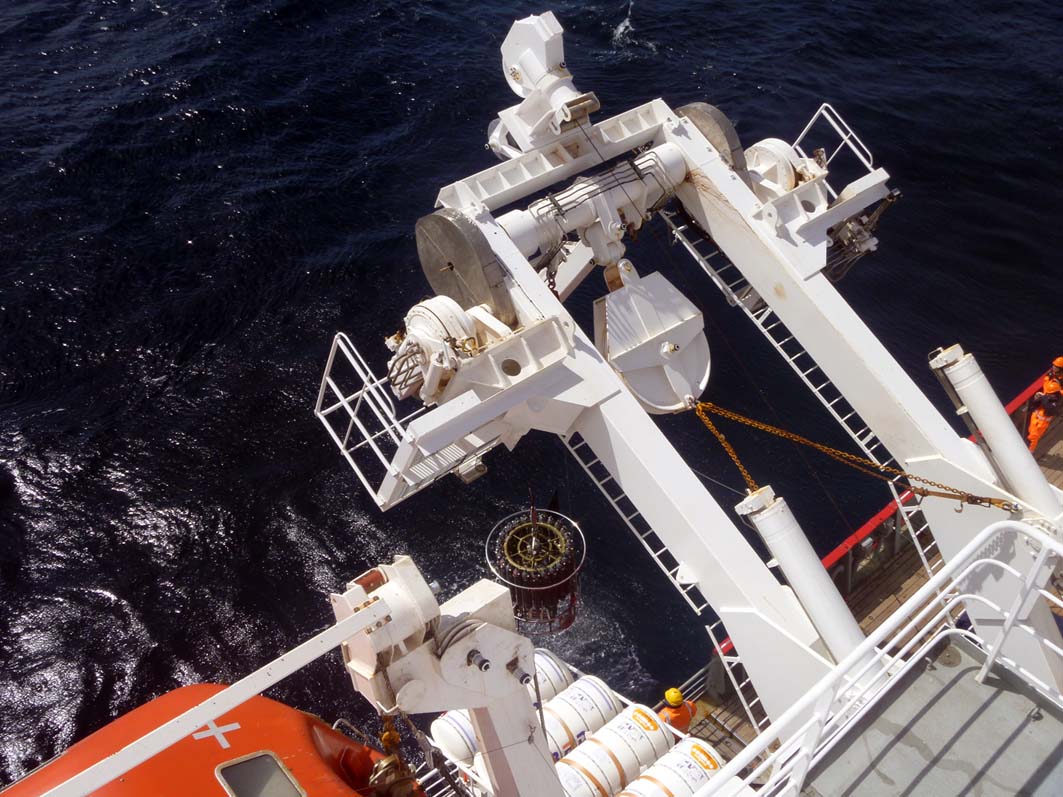
Going south part 3: Doing some science! ...by PhD student Rowan Dejardin
As described in my previous blogs, I'm travelling south with the British Antarctic Survey (BAS) to collect samples from the South Georgia shelf, as part of my PhD (jointly funded by the BGS and the University of Nottingham, and within the Centre for Environmental Geochemistry). Having dropped off a team of scientists and technical staff on the remote island of Signy we started heading north in the general direction of South Georgia. After a day of slow sailing through the brash ice we head in to open waters. Whilst we're going to miss the ice behind, with its attendant penguins and seals, the entry into open water means it will now be possible to undertake some science! Also, a gigantic tabular iceberg, that fills the horizon at times, is soon sighted and keeps us company for much of the day, with other smaller bergs.
November
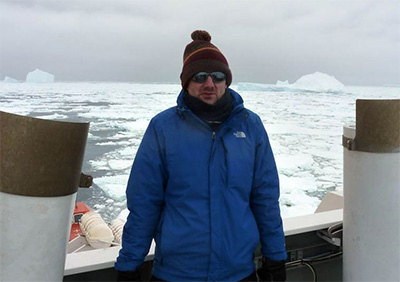
Going South Part 2: Signy Relief ... by Rowan Dejardin
As described in my previous blog, I'm travelling south with the British Antarctic Survey (BAS) to collect samples from the South Georgia shelf, as part of my PhD (jointly funded by the BGS and the University of Nottingham, and within the Centre for Environmental Geochemistry)… A couple of hold-ups (to fuel the ship – important, and to get a replacement chef – very important!) meant that we were a couple of days late leaving the Falklands to head south. Whilst this was a bit frustrating it did mean we had a couple more days to explore the Falklands and see some more penguins. It also meant that we missed a big storm in the Drake Passage that had looked like it was going to make the crossing interesting, therefore our trip through some of the roughest seas in the world turned out to be quite peaceful!
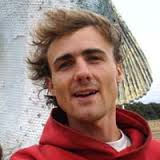
Going South Part 1: How to get to the Falkland Islands... by Rowan Dejardin
My PhD project (jointly funded by BGS and the University of Nottingham and within the Centre for Environmental Geochemistry) is focussed on trying to reconstruct changes in ocean conditions through the last 15000 years around the Subantarctic island of South Georgia. The marine sediment cores that I’m working on were collected in 2012 by the British Antarctic Survey (BAS) ship, the RRS James Clark Ross (JCR), that sails south every year to conduct a range of science projects in addition to providing logistical support to British Antarctic bases. Earlier this year I successfully applied for funding from the Collaborative Gearing Scheme to join a BAS scientific cruise sailing from the Falkland Islands in November, so that I could collect sediment samples that will allow me to calibrate the proxies I am using to reconstruct past conditions...
October
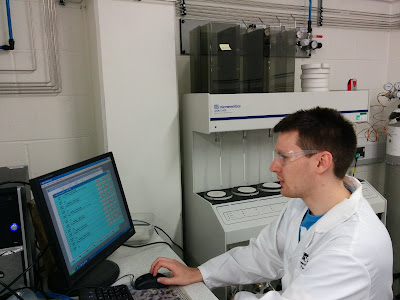
A PhD on understanding the properties of shale rocks and their ability to hold gases... by Patrick Whitelaw
Hello, my name is Patrick and I have just started my PhD within the Centre for Environmental Geochemistry, between BGS and the University of Nottingham Faculty of Engineering. My research focuses on understanding the properties of shale rocks and their ability to hold gases specifically methane. Due to the commercial success of the US shale gas industry the UK has become increasingly interested in trying to understand how much gas is generated and stored within our shale reservoirs. I will be comparing shale rocks matured under high pressure water pyrolysis conditions in the laboratory to natural shale rocks matured under geological conditions to understand gas storage as a function of maturity over geological timescales...

The start of my PhD research into iodine deficiency... by Olivier Humphrey
Hi, my name is Olivier and I have just started my PhD within the Centre for Environmental Geochemistry (University of Nottingham and the BGS). My research revolves around iodine geodynamics and plant uptake. This is an important and worthwhile research project because iodine deficiency affects around 2 billion people worldwide. Iodine deficiency diseases (IDD) have a range of effects including goitre, growth impairment and mental retardation. My work will help to inform practical strategies to tackle iodine deficiency, such as correct land management and biofortification of iodine into crops. Parent material contributes very little to iodine concentrations is soils. Soil-iodine is predominately derived from volatilized methylated forms in seawater, which enter the soil-plant system via rainfall and dry deposition. Whilst coastal-proximity is an important factor in iodine concentrations, many other soil characteristics contribute to its mobility and availability once deposited in soils...

Soil Geochemistry for agriculture and health... by Michael Watts & Martin Broadley
In September we launched our Royal Society-Department for International Development (RS-DFID) doctoral training programme, Soil geochemistry for agriculture and health, in Harare. The programme runs from 2015-2020 and is being co-ordinated by the joint University of Nottingham (UoN) / British Geological Survey (BGS) Centre for Environmental Geochemistry (CEG)...

Quality Accreditation in Inorganic Geochemistry... by Charles Gowing
The Inorganic Geochemistry Laboratories in Nottingham successfully achieved re-accreditation to the Quality Standard ISO 17025 (competence of testing and calibration laboratories) and the Environment Agency's Monitoring Certification Scheme (MCERTS) for soils.
The laboratories have held accreditation to ISO 17025 since 1998. Maintenance of this accreditation is by re-accreditation every four years and ongoing competence is assessed annually via external audit by independent experts from the UK Accreditation Service (UKAS). Accreditation for laboratory data output demonstrates a standard for the quality of analyses against an internationally recognised standard, namely ISO 17025.

The International Ocean Discovery Program (UK) Student Conference 2015... by Rowan Dejardin
In late September 2015 29 PhD students from across the UK headed to Northumberland to learn about the scientific work carried out by the International Ocean Discovery Program (IODP). After registering at the University of Newcastle the group were taken by coach to Allendale, in the beautiful North Pennines AONB, and the conference got off to an excellent start with a hearty meal! This was followed by a talk from Kate Littler, from the University of Exeter, describing a typical day in the life aboard the Joides Resolution (JR), the IODP’s flagship vessel, and an exciting live Skype tour of the JR.
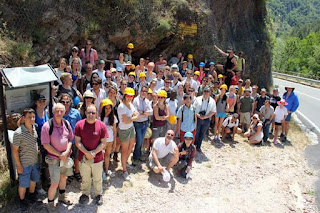
The Urbino Summer School in Paleoclimatology... by PhD students Hennie Detlef and Amy Sparkes
From 15th July to 1st August, 71 students from all over the world came together in the small town of Urbino, Italy to attend the 12th Urbino Summer School in Paleoclimatology (USSP). After several long hours spent travelling, at times asking ourselves why anyone would choose such a small, relatively remote town for a summer school, we finally arrived and the reason instantly became clear. Urbino, a World Heritage Site set in the spectacular hills of the Marche region, has retained most of its beautiful old town with the university and accommodation situated right in the centre!

Working together to combat environmental pollutants and inform agricultural strategies... by Michael Watts
My team at the British Geological Survey has hosted four Commonwealth Professional Fellowships from Pakistan, India, Malawi and Zimbabwe since 2012. The scheme funded by the Commonwealth Scholarship Council UK (CSCUK) provides support for professionals in the Commonwealth to undertake training at a host institute in the UK. Here a few of the Fellows give an account of their experience and opportunities arising from such a Fellowship in the UK...

Learning to drill... by Jonathan Dean
Jonathan Dean from the Stable Isotope Lab at the British Geological Survey has just returned from a lake drilling training course in the Republic of Macedonia. Here he discusses what he learnt...
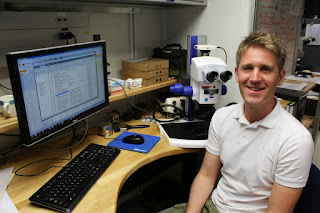
How do deep ocean trenches form?... by Sev Kender
One of the biggest questions remaining to be answered in plate tectonics is how subduction zones start, or 'initiate'. Plate tectonics and seafloor spreading was a ground-breaking theory discovered in the mid-20th-Century that explained much of geology, and started our modern discipline. Before it there was no single accepted theory of why oceans and mountains formed, why continents look like they used to be linked together, and why animals of different continents appeared to have long-lost common ancestors. Here Sev Kender tells us about some recent advances in the science...
September
20th QRA Annual International Postgraduate Symposium... by Jack Lacey
In early September, the Quaternary Research Association (QRA) hosted their annual symposium exclusively for postgraduate (PhD and MSc) students at the University of Cambridge. Over 45 delegates from 24 universities presented and discussed their diverse research on the Quaternary (the most recent period of geological time covering the last 2.6 million years) from sites around the world covering ice, land and sea...
August

A blog about investigating geogenic arsenic exposure from private drinking wells in Cornwall... by Daniel Middleton
The interaction of the natural environment and our human health is an idea which fascinated me given that so many negative environmental health outcomes are perceived as anthropogenic in nature. Following completion of my degree I had the opportunity to apply for a PhD studentship investigating geogenic arsenic exposure from private drinking wells in Cornwall, UK, and here I am...
Fieldwork to investigate human induced changes on important Asian wetlands... by Prof Melanie Leng
Exponential population growth, urban expansion and climate change are changing the quality of freshwaters around the World. In countries such as Malaysia which aims to become a "fully developed" nation by 2020 rapid deforestation, urban development and resource exploitation have put drainage basins under unprecedented pressures. A team from the Centre for Environmental Geochemistry (BGS and the University of Nottingham) went on a site investigation to look at one of Malaysia's premier wetlands, the famous Tasik Chini site in central Pahang to investigate the current and past water quality status using information preserved in the sediments that have accumulated on the bottom of the lake. Here Melanie Leng tells us more...
Limnogeology and the biggest little city in the world... by Jack Lacey
In June, scientists from around the world gathered in Reno, Nevada (USA) for the 6thInternational Limnogeology Congress (ILIC6) to present and discuss their multi-disciplinary research on lake sediment records. Centre for Environmental Geochemistry PhD student Jack Lacey reports on the meeting and tells us about his experience...
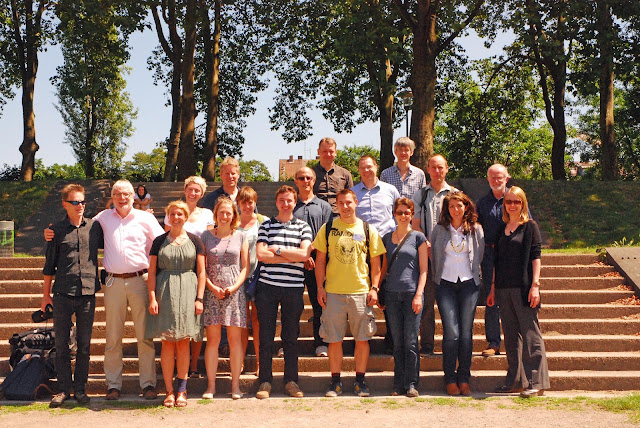
Planning the analysis of half a kilometre of African lake mud... by Jonathan Dean
In the end of June, around 20 scientists from the UK, Germany and the US met at the University of Cologne to discuss our new project: the analysis of half a kilometre of sediments taken from Lake Chew Bahir in Ethiopia. We aim to use the sediments to reconstruct how the environment of east Africa has changed over the last 500,000 years...
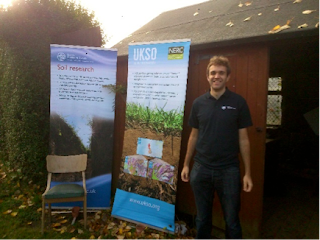
Hidden landscapes in the city: the world of urban gardens and allotments... by Jon Stubberfield
The demand for urban gardens and allotments is on the rise as is the pressure for space in our towns and cities. But is it possible to re-invent urban spaces for use as gardens and allotments or should we look elsewhere? Are urban soils suitable for the everyday gardener's needs and is gardening as healthy an activity as everyone says it is?

Combatting malnutrition in sub-Saharan Africa... by Grace Manzeke
Smallholder rain-fed agriculture supports livelihoods of more than 60% of the Zimbabwean population. Like any system, it faces various challenges that include poor soils, poor crop yields and climate change and variability among others...
June

Continental drilling and a trip to Minneapolis ... by Prof Melanie Leng
In early June the International Continental scientific Drilling Program (ICDP) committees met to assess deep drilling of the Earth applications for 2015. The meeting was held at the world famous LacCore (National Lacustrine Core Facility) in Minneapolis. Here Melanie Leng explains a bit about ICDP, the UK’s geoscience community involvement, and her trip to Minneapolis...

Science-Based Archaeology within the Centre for Environmental Geochemistry… by Dr Angela Lamb and Dr Holly Miller
On 1st June BGS hosted a workshop with the aim to bring together scientists from BGS and the University of Nottingham to facilitate more collaboration between the institutes on the theme of Science-Based Archaeology. Here Angela Lamb (BGS) and Holly Miller (University of Nottingham) tell us about the workshop...
May

Chromium in crops... by Elliott Hamilton
Chromium, the 22nd most abundant element in our Earth's crust, takes many different forms. Some of these forms, or 'species', pose a risk to human health so it's important to know where they're created and how they move through the soil into crops. Elliott Hamilton's fieldwork in Africa is focused on the mechanics of agricultural practices and the knock-on impact of soil-crop transfer of harmful Chromium species...

Managing Malawi's spatial data ... by Carl Watson
Salome Mkandawire, a GIS expert from the Malawi government Surveys Department, has just spent a busy month training with Carl Watson, a Systems Developer &Analyst at the BGS. Their aim was to share good data practice and information management experience as well as research international standards for spatial metadata. Carl explains why BGS is a leader in these fields and asks Salome how this CSCUK Professional Fellowship is helping the National Spatial Data Centre in Malawi...
Ancient links between climate and vegetation... by Jonathan Dean
Dr Jonathan Dean is part of a new multi-million pound project that hopes to shed new light on the possible links between environmental change and the emergence of our species...

Sea Shells on the Sea Bed... by Henrieka Detlef
Henrieka Detlef is using shells which are over a million years old to reconstruct the different climatic components of the Bering Sea. She's a 1st year PhD student at Cardiff University and a BUFI CASE student at the British Geological Survey studying Paleoclimatology and Marine Geology. Find out from Henrieka why she's so interested in investigating climate systems of the past and how marine sediment cores will unlock the answers...
April

Why learn good Science Communication?... by Dr Jonathan Dean
Our scientists never stop striving to improve their understanding of the world around them. Equally they never stop learning new ways to better communicate their work and discoveries to the wider world. One such scientist is Jonathan Dean, a Postdoctoral Research Assistant (at BGS within the CEG), who's just back from a 2 day public engagement course run by NERC. Here Jonathan reflects on the importance of good science communication and the skills learnt on the NERC Engaging the Public with your Research training course...
March
Is there an environmental link to esophageal cancer in Tanzania?... by Dr Michael Watts
Scientists from the Centre for Environmental Geochemistry are helping health organisations understand why esophageal cancer is localised within specific areas of the African Rift Valley. Whilst various causal factors are now under investigation, such as high-strength ‘kill me quick’ alcohol consumption or hot tea drinking, it is difficult to fully explain the localised nature of the burden. Here Dr Michael Watts outlines why soil around Mount Kilimanjaro could unearth some answers...

How much shale gas lies beneath our feet... by Dr Clement Uguna
Most people these days will have heard of shale gas. It’s the unconventional gas stored within fine grained mud rocks and its extraction has been hitting the UK headlines over the last couple of years. Dr Clement Uguna, a new Research Fellow at the British Geological Survey and the University of Nottingham, is pioneering research into answering questions about how much gas lies beneath our feet...
February
Random variables and field sampling... by Dr Murray Lark
It's not just geologists that travel to far away landscapes unearthing knowledge and understanding about the planet we live on! Each research trip needs it's own unique fieldwork team, a special blend of disciplines and expertise. In one trip to central Africa Murray Lark, an environmental statistician, accompanied two environmental geochemists, Michael Watts and Elliott Hamilton, on a search to understand the health implications of trace elements in the soil. Here Murray tells us why his role before-during-after hands-on fieldwork is so essential...
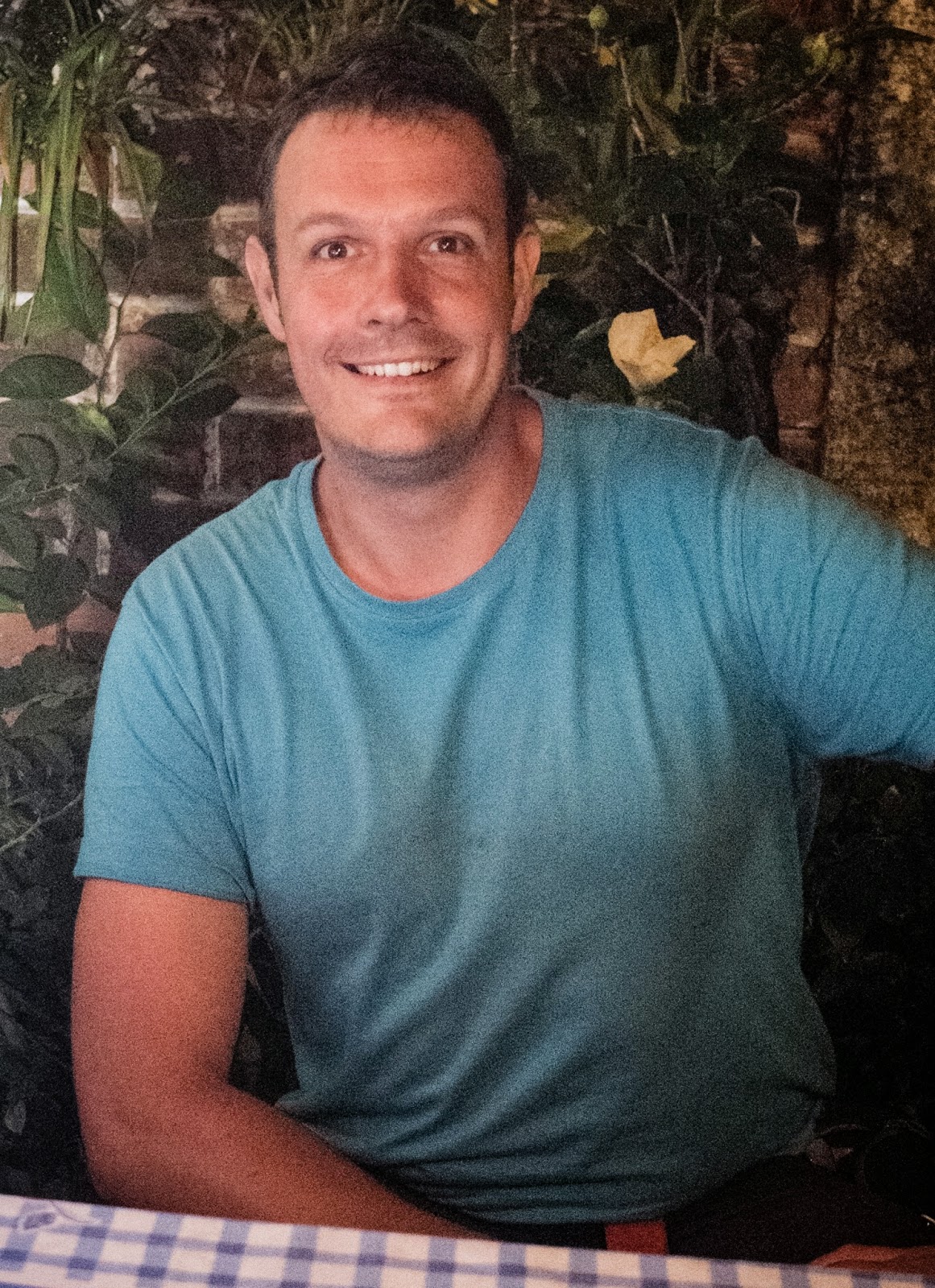
Viva the Viva! ... by Darren Beriro
Darren, an Environmental Chemist, has just completed his PhD at the University of Nottingham while working for the last year at the BGS, here he tells us about his PhD experience...
January
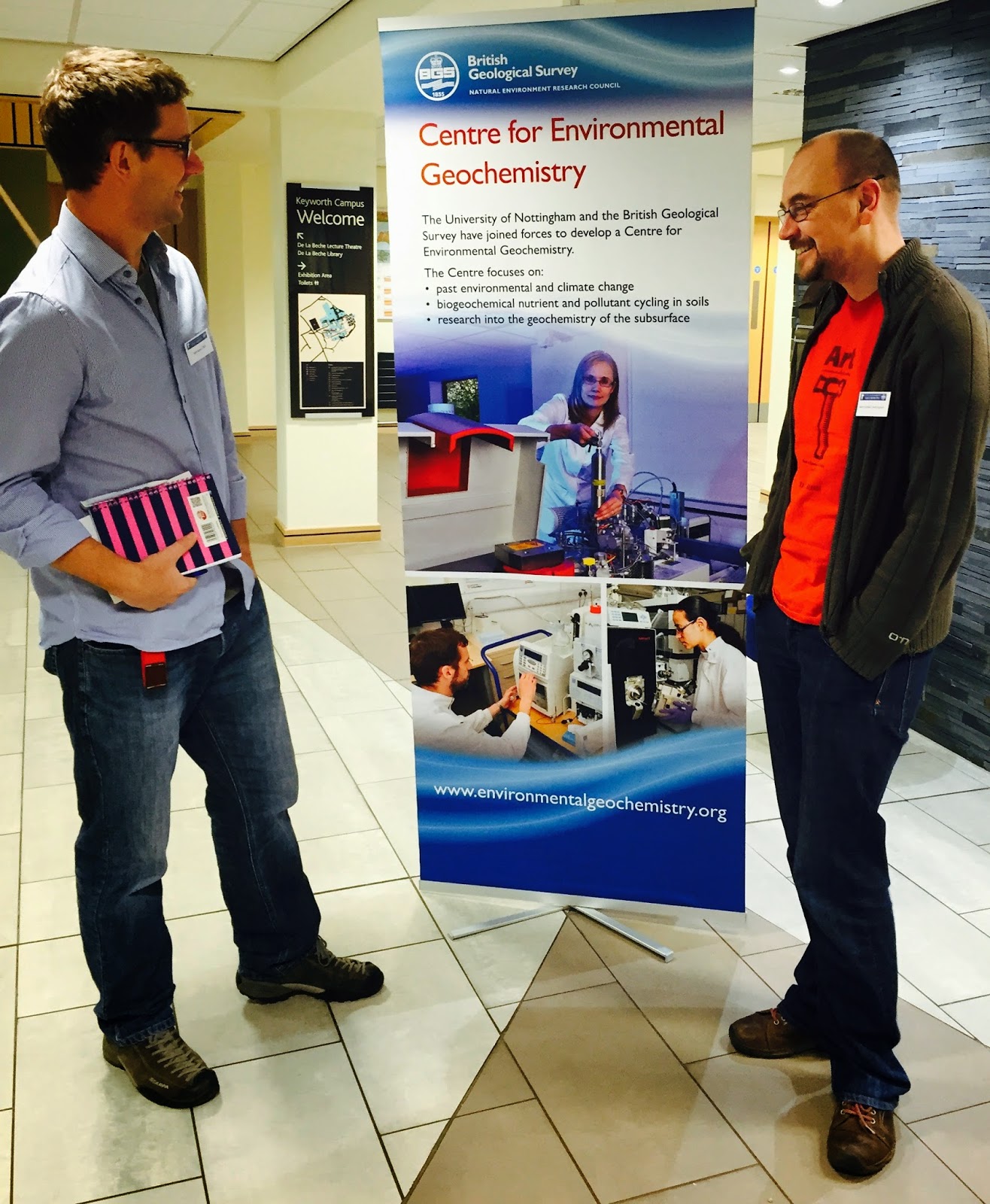
Environmental Change Exchange... by Prof Melanie Leng
Last week a group of environmental change scientists from the BGS and the University of Nottingham met up at a networking event aimed at fostering collaboration between the two premiere environmental research organisations in the Midlands. Here Prof Melanie Leng tells us about the aims and achievements of the day...

Potential impacts of shale gas exploitation on groundwater... by Mark Stevenson
Rob Ward is our newly appointed honorary Professor and Science Director for Groundwater. On the 20th January he presented ‘Potential impacts of shale gas exploitation on groundwater’at a seminar hosted by the University of Nottingham and BGS. Here, Mark Stevenson (a PhD student from the University of Nottingham) reports on how it went...
Talking Isotopes, state side... by Ginnie Panizzo
Every year, for a whole week in December, 20000 geoscientists descend on San Francisco for one of the biggest Geoscience conferences in the world: the American Geophysical Union (AGU) Fall Meeting. Can you imagine what its like?! Certainly there are fleece wearing, poster-tube-wielding geologists everywhere. Last month the number of delegates reached an all time high at 24,000 people, there were 3,000 talks and posters presented each day, here Ginnie Panizzo and Sarah Roberts to tell us about their American adventure...
Geochemistry brings societal benefits to sub-Saharan Africa... by Dr Michael Watts
Dr Michael Watts, Head of Inorganic Geochemistry at the Centre for Environmental Geochemistry, outlines how BGS and University of Nottingham are bringing big societal benefits to sub-Saharan Africa by supporting earth science researchers and academic networks...
Ancient carbon beneath frozen Arctic lakes...by Mark Stevenson
During my PhD research I had the opportunity to visit the remote and beautiful island of Qeqertarsuaq (Greenlandic) or Disko Island as it is more widely known. The visit involved taking cores of sediment that had accumulated at the bottom of the lakes (over the last 10,000 years) for various geochemical analysis of the carbon in the sediments...
